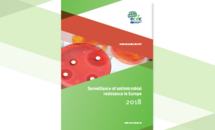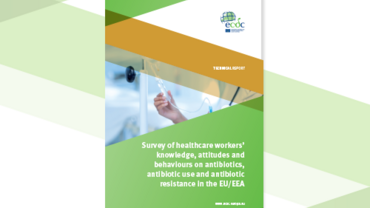Surveillance of antimicrobial resistance in Europe 2018
The results presented in this report are based on antimicrobial resistance (AMR) data from invasive isolates reported to the European Antimicrobial Resistance Surveillance Network (EARS-Net) by 30 European Union (EU) and European Economic Area (EEA) countries in 2019 (data referring to 2018), and on trend analyses of data reported by the participating countries for the period 2015 to 2018.
Executive Summary
As in previous years, the AMR situation in Europe displays wide variations depending on bacterial species, antimicrobial group and geographical region. For several bacterial species–antimicrobial group combinations, a north-to-south and west-to-east gradient is evident. In general, lower resistance percentages were reported by countries in the north while higher percentages were reported in the south and east of Europe. The high variability in AMR across EU/EEA countries reinforces the scope for significant reductions through investments to strengthen current best practice.
In 2018, more than half of the Escherichia coli isolates reported to EARS-Net and more than a third of the Klebsiella pneumoniae isolates were resistant to at least one antimicrobial group under regular surveillance, and combined resistance to several antimicrobial groups was frequent. Resistance percentages were generally higher in K. pneumoniae than in E. coli. While carbapenem resistance remained rare in E. coli, several countries reported carbapenem resistance percentages above 10% for K. pneumoniae. Carbapenem resistance was also common in Pseudomonas aeruginosa and Acinetobacter species, and at higher percentages compared with K. pneumoniae. For all four gram-negative bacteria, the countries reporting the highest carbapenem resistance percentages were also among the countries reporting the highest resistance percentages for other antimicrobial groups. For most gram-negative bacterial species–antimicrobial group combinations, changes in resistance percentages between 2015 and 2018 were moderate, and resistance remained at previouslyreported high levels.
For Streptococcus pneumoniae, the resistance situation appeared stable, but with large inter-country variations. For Staphylococcus aureus, the decline in the percentage of meticillin-resistant (i.e. MRSA) isolates reported in previous years continued in 2018. Nevertheless, MRSA remains an important pathogen in the EU/EEA, as the levels of MRSA were still high in several countries, and combined resistance to other antimicrobial groups was common.
One development of particular concern was the increase in the EU/EEA population-weighted mean percentage for vancomycin-resistant Enterococcus faecium from 10.5% in 2015 to 17.3% in 2018. Corresponding increasing trends highlight the need for close monitoring to better understand the epidemiology, clonal diversity and risk factors associated with infection. Contrary to many other species under surveillance, no distinct geographical pattern could be seen for vancomycin-resistant E. faecium, as high percentages were reported from both southern, eastern and northern Europe.
The high levels of AMR for several important bacterial species-antimicrobial group combinations reported to EARS-Net for 2018 show that AMR remains a serious challenge in the EU/EEA. Despite the political prioritisation of AMR as a threat to public health and the availability of evidence-based guidance for antimicrobial stewardship, adequate microbiological capacity and infection prevention and control, it is clear that public health action to tackle the situation remains insufficient.
Download








